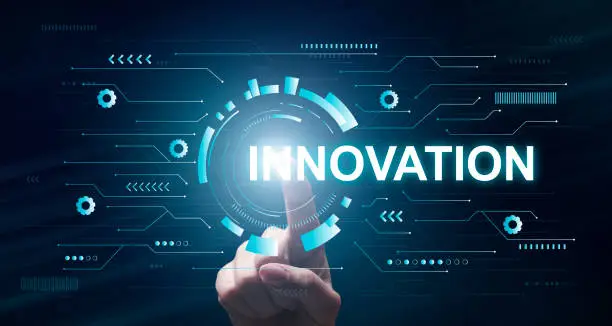Key Innovations Driving the Tech Industry Forward
Introduction
Why Innovation is Crucial in Tech
Have you ever wondered how the tech industry keeps moving at such a lightning-fast pace? Well, it all boils down to innovation — the lifeblood of technology. Without fresh ideas and groundbreaking developments, tech companies would struggle to stay relevant. Innovation drives not just new gadgets, but entire industries forward, from healthcare to finance and entertainment.
The Rapid Pace of Technological Change
The tech landscape doesn’t wait around. What was cutting-edge yesterday might become obsolete tomorrow. This rapid pace forces companies and consumers alike to adapt constantly. But it also creates incredible opportunities for growth and improvement — as long as you keep up with the trends.
Artificial Intelligence (AI) and Machine Learning (ML)
How AI is Transforming Industries
AI isn’t just a buzzword anymore. From self-driving cars to virtual assistants like Siri and Alexa, AI is revolutionizing how we live and work. It enables machines to think, learn, and make decisions, often faster and more accurately than humans.
Real-World Applications of Machine Learning
Machine learning, a subset of AI, helps systems improve with experience. Think Netflix recommendations, fraud detection in banks, or even medical diagnoses. These algorithms analyze massive datasets to spot patterns humans might miss. It’s like having a super-smart assistant that never sleeps!
5G Technology
What is 5G and Why It Matters
5G is the fifth generation of wireless technology, and it’s a game-changer. With speeds up to 100 times faster than 4G, 5G isn’t just about quicker downloads; it’s about unlocking new tech possibilities. It offers lower latency, meaning devices communicate almost instantaneously.
Impact on Connectivity and IoT
Thanks to 5G, the Internet of Things (IoT) — where everyday devices are connected — can flourish. Imagine smart cities where traffic lights, utilities, and emergency services sync perfectly to improve safety and efficiency.
Cloud Computing
Evolution of Cloud Services
Remember when saving files meant carrying around USB sticks? Now, everything’s in the cloud. Cloud computing lets companies rent computing power and storage from providers like Amazon Web Services or Microsoft Azure. This flexibility accelerates innovation by reducing costs and boosting scalability.
Benefits of Cloud Adoption for Businesses
Businesses can now deploy apps globally in minutes, collaborate remotely, and access powerful tools without huge upfront investments. The cloud is like having a massive tech toolbox available on demand.
Blockchain Technology
Beyond Cryptocurrency: Blockchain Use Cases
Blockchain might be famous as the tech behind Bitcoin, but it’s much more than that. Its decentralized, tamper-proof nature is transforming industries such as supply chain management, voting systems, and digital identity verification.
How Blockchain Enhances Security and Transparency
Because every transaction is recorded across multiple computers, it’s nearly impossible to alter records unnoticed. This boosts trust and transparency, which are critical in today’s digital world.
Internet of Things (IoT)
Connecting Everyday Devices
Your smart fridge, fitness tracker, and even home security cameras are part of IoT — a network of connected devices sharing data. This connectivity makes life easier by automating tasks and providing real-time insights.
IoT’s Role in Smart Cities and Homes
Cities are getting smarter, too. IoT helps optimize energy use, manage traffic flow, and monitor environmental conditions, creating safer and more efficient urban spaces.
Quantum Computing
What is Quantum Computing?
Quantum computing uses principles from quantum mechanics to process information at speeds unimaginable for classical computers. While still in early stages, it promises to solve complex problems in seconds that would take today’s supercomputers years.
Potential Disruptions and Future Prospects
Industries like pharmaceuticals, materials science, and cryptography stand to benefit massively. Think about breaking down drug discovery barriers or creating unbreakable encryption.
Augmented Reality (AR) and Virtual Reality (VR)
Differences Between AR and VR
AR overlays digital information on the real world — like Pokémon Go, where virtual creatures appear in your backyard. VR, on the other hand, immerses you fully in a digital environment, like stepping into a video game or virtual meeting.
Applications in Gaming, Training, and Healthcare
Both AR and VR are reshaping gaming, medical training, remote collaboration, and even mental health therapies. The tech brings experiences and training to life in ways textbooks never could.
Robotics and Automation
Robotics in Manufacturing and Daily Life
Robots aren’t just sci-fi anymore. They assemble cars, deliver packages, and even assist in surgeries. Automation reduces human error and frees up people for creative and complex tasks.
Automation and the Future of Work
While some fear job losses, automation can boost productivity and create new roles in robot management, programming, and maintenance. It’s about humans and machines working together.
Cybersecurity Innovations
Addressing Modern Security Threats
As tech advances, so do cyber threats. From ransomware to phishing, companies need robust defenses. Innovations like AI-driven threat detection and zero-trust architectures are key.
Emerging Technologies in Cyber Defense
Tech giants like CrowdStrike and Palo Alto Networks use AI and big data to identify threats before they cause damage. Cybersecurity is a frontline battle in the digital age.
Edge Computing
Definition and Importance
Edge computing processes data closer to the source — your phone or IoT device — instead of sending everything to the cloud. This reduces latency and bandwidth use, improving speed and reliability.
Edge Computing vs. Cloud Computing
While cloud computing offers massive power, edge computing supports real-time data processing for critical applications like autonomous vehicles or industrial monitoring.
Renewable Energy Technologies in Tech
Green Tech Innovations
Tech companies are also innovating to reduce environmental impact. Solar-powered data centers, energy-efficient chips, and battery tech advances are some examples.
Sustainable Practices in Tech Companies
Big players like Google and Apple have committed to running on 100% renewable energy, pushing the industry toward a greener future.
Biotech and Health Tech Advances
Tech-Driven Medical Breakthroughs
Tech’s role in health is huge—from CRISPR gene editing to AI diagnostics and telemedicine. These breakthroughs are saving lives and improving quality of care.
Wearables and Personalized Health Monitoring
Fitbits and Apple Watches don’t just track steps; they monitor heart rates, oxygen levels, and sleep patterns, giving users personalized health insights.
Open Source and Collaborative Innovation
The Role of Open Source Software
Open source projects like Linux and TensorFlow foster collaboration, accelerating tech development by making tools freely available to millions of developers.
Collaborative Platforms Fueling Innovation
GitHub and other platforms enable teams worldwide to build, test, and improve software together, breaking down barriers to innovation.
Conclusion
Summary of Key Innovations
From AI and 5G to blockchain and quantum computing, the tech industry’s forward momentum depends on continuous innovation. These technologies are reshaping how we work, play, and solve problems.
Looking Ahead: What to Expect Next
The future promises even more exciting breakthroughs, with smarter, faster, and greener tech transforming our world in ways we can barely imagine today. Staying informed and adaptable will be key to riding this wave of change.
FAQs
1. What is the most impactful technology driving the industry today?
AI is arguably the most transformative, influencing almost every sector by automating tasks and uncovering insights.
2. How does 5G improve Internet speeds and connectivity?
5G offers much faster data rates and lower latency, enabling real-time communication and supporting millions of connected devices simultaneously.
3. Can AI completely replace human jobs?
Not entirely. AI automates repetitive tasks but also creates new roles requiring creativity, emotional intelligence, and complex decision-making.
4. What industries benefit most from blockchain technology?
Finance, supply chain, healthcare, and government sectors benefit hugely due to blockchain’s transparency and security.
5. How is tech innovation influencing sustainability efforts?
Innovations like energy-efficient hardware, renewable energy data centers, and green software design help reduce tech’s environmental footprint.

